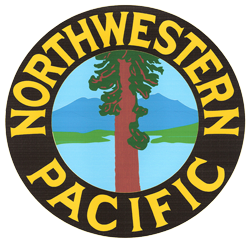From The Headlight January – February 2015
Central Pacific 29
Summary of This Year’s Efforts
By Mike Manson
Although CP 29 is third in line for restoration work, much was accomplished on the truck frames this year. Each work session saw two to four team members working on the trucks.
In the fall of 2012 Channel Lumber furnished the four end beams, four wheel pieces, four transoms and eight safety beams. Each piece was sawn to the correct profile but slightly longer than the original. Last year we had the ends of each piece rough-shaped with a large band saw to match the original. Then the Restoration Team members began the final shaping using both electric and hand-powered tools: circular saw, hammer & chisel, framing slick and rasp. The truck frames fit together using mortise and tenon joints. Each tenon was trimmed, shaped and beveled on its leading edges, and the corresponding mortise was enlarged and deepened as necessary to get a tight-fitting joint. The oak timbers are dense and tough so progress is slow.
When properly shaped the ten pieces of each frame slipped together quickly. A few good raps with a sledge hammer seated each tenon. Nuts, bolts and washers salvaged from B&O 20 and some new fasteners were used to lock the timbers together. Then the various pieces of truck hardware were mounted, including B&O 20’s brake hangers and spring-plank hanger-carriers. The spring planks have been fitted into position. The truck bolsters are drilled for the king pin. All wood and metal pieces were painted black before assembly. When assembly is complete the trucks will receive another coat of paint.
Three of the four bolster springs have gone out for sandblasting. We are searching for a replacement for the fourth spring, because it contains fewer steel leaves than the others.
Jeff Millerick ordered eight, 4-inch-wide steel reinforcing plates to go on top of the trucks. They are of ½-inch-thick steel that is bent into a Z-shape. The commercial metal shop cut the plates and made a right-angle bend in each one. Jeff heated each piece and formed a second bend. By the time you read this article the locations for bolt holes will be marked on each plate. Then Jeff will use his shop’s metal forming machine to punch the holes. The vendor charged us $15 per plate, but Jeff is donating his labor. At the next work session in January each plate will be bolted on top of a wheel piece-and-transom joint, resulting in a much stronger joint that is better able to support the car body.
Please remember to make a donation to our “Buy a Pound of Pedestal” campaign. Over $1800 has been raised so far – Thank you, donors! But more donations are needed to pay for casting the pedestals. Each donation of $10 will cover the prorated cost of the patterns, steel, sales tax, energy and labor needed to cast one pound of a pedestal for CP 29 and bring it to the De Carli Trolley Museum. Please send a donation today so the Society can continue the restoration of CP 29.


